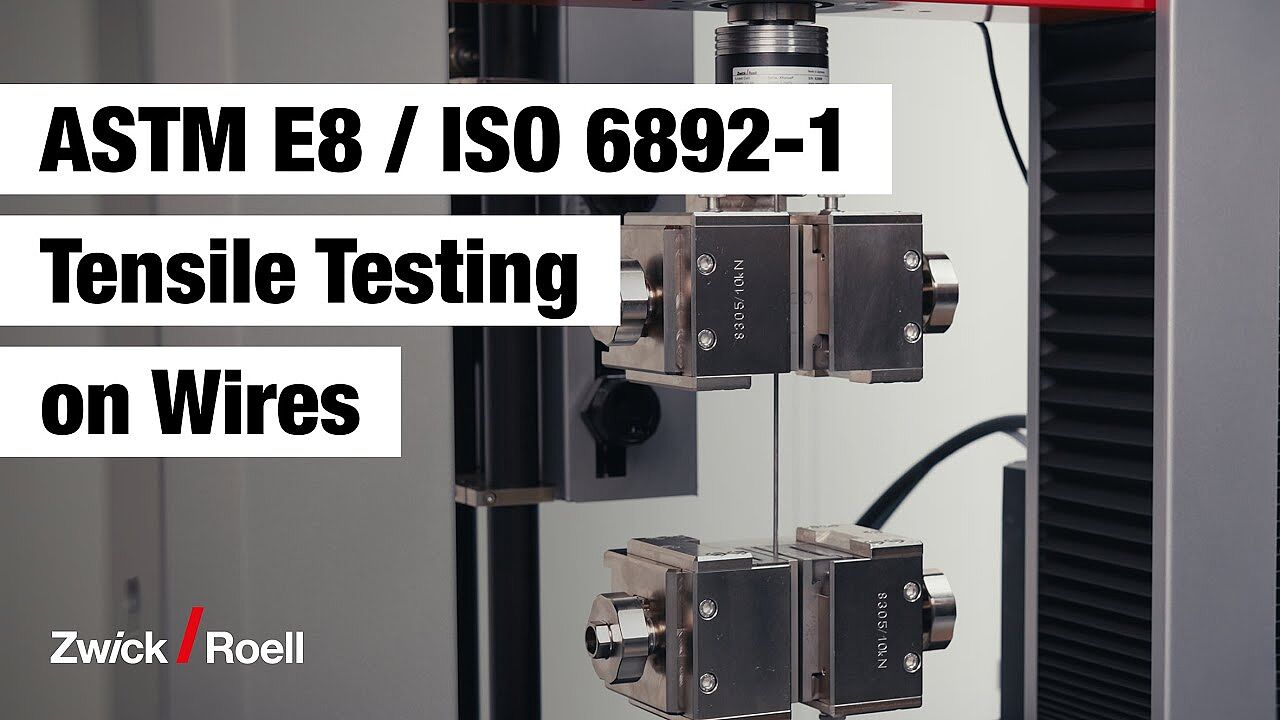
The testing of wires and cables can be carried out using different tests, such as tensile tests, fatigue tests or hardness tests. The characteristic values determined from these tests are used to evaluate the load capacity of the material.
All metals can be formed into wire, which is a very common metal product. Wires are used in all areas of the manufacturing industry: in construction engineering, in electrical technology and energy technology, in aircraft and automobile manufacture, and in medical technology. Wire braided into cables is used in load-bearing applications in cable railways, elevators, cranes, bridge-building, anchorings, and fastenings. This wide range of applications means that mechanical demands are extremely varied and that testing material properties is often highly relevant to safety.

By playing this video, you agree to the use of cookies as well as to the transfer of data to YouTube in the USA. Additional data privacy notices.
Tensile tests on wire help determine material characteristic values including tensile strength or yield strength. In this context, tensile tests on wire present a challenge for the specimen grips. Wires can be very thin and at the same time of very high strength. They cannot be machined for testing, and therefore cut-off lengths are used and require suitable gripping arrangements. Simply clamping wires between jaws can cause failure at an unwanted location. ZwickRoell can supply specimen grips featuring various gripping technologies for safe and reliable testing. For strain measurements on thin wires, you can use the videoXtens optical extensometer and on thicker wires both optical or contact longstroke extensometers can be used.
Wire steel strands are multiple wires wound together. Specimen gripping presents a particular challenge for tensile tests on steel strands because of the high tensile strength created by the winding of the wires. ZwickRoell has developed grips that enable reliable and homogeneous specimen gripping and prevent the specimen from slipping during the tensile testing process.
For tensile tests on cables, in addition to a fork head used to connect the customer's cable attachments, hydraulic grips in a separate second test area are used to grip the specimen. This allows you to test normal round specimens without the need for a separate tensile testing machine for round materials.